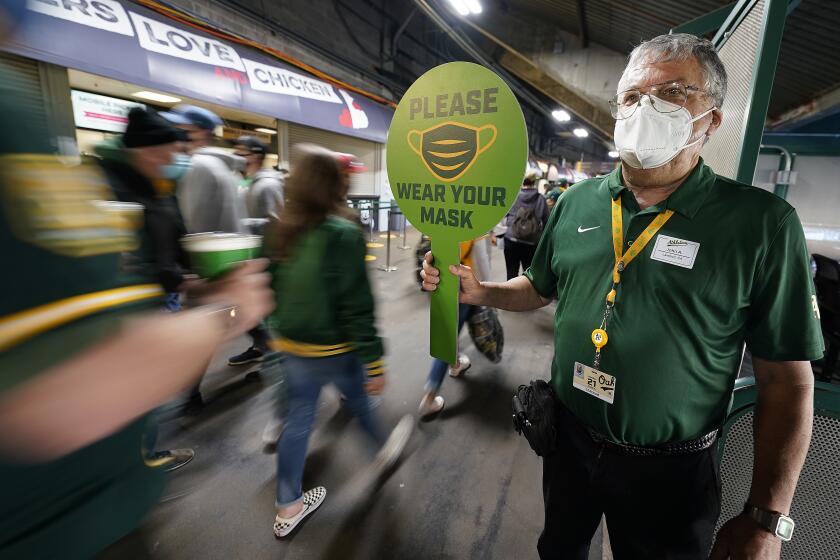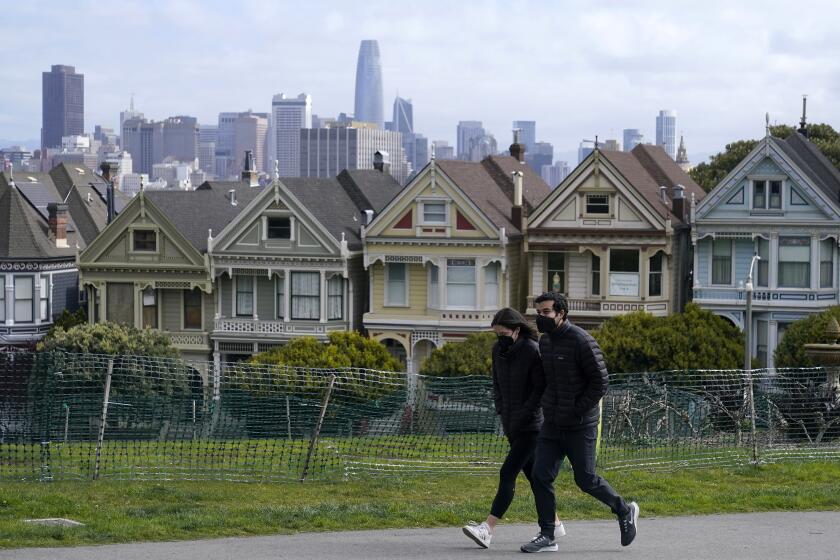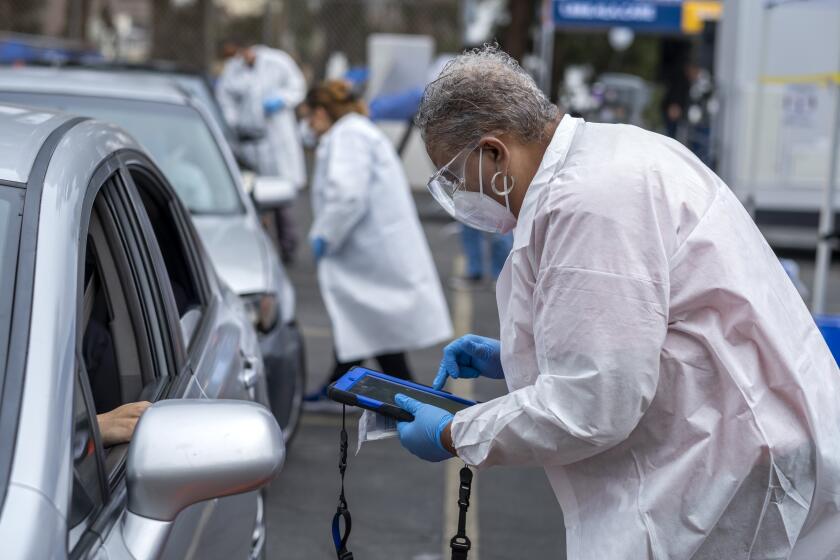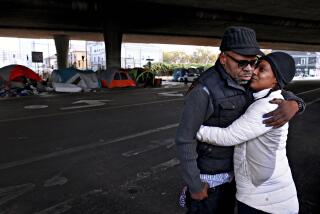Alameda County ends short-lived mask mandate, citing improved coronavirus conditions
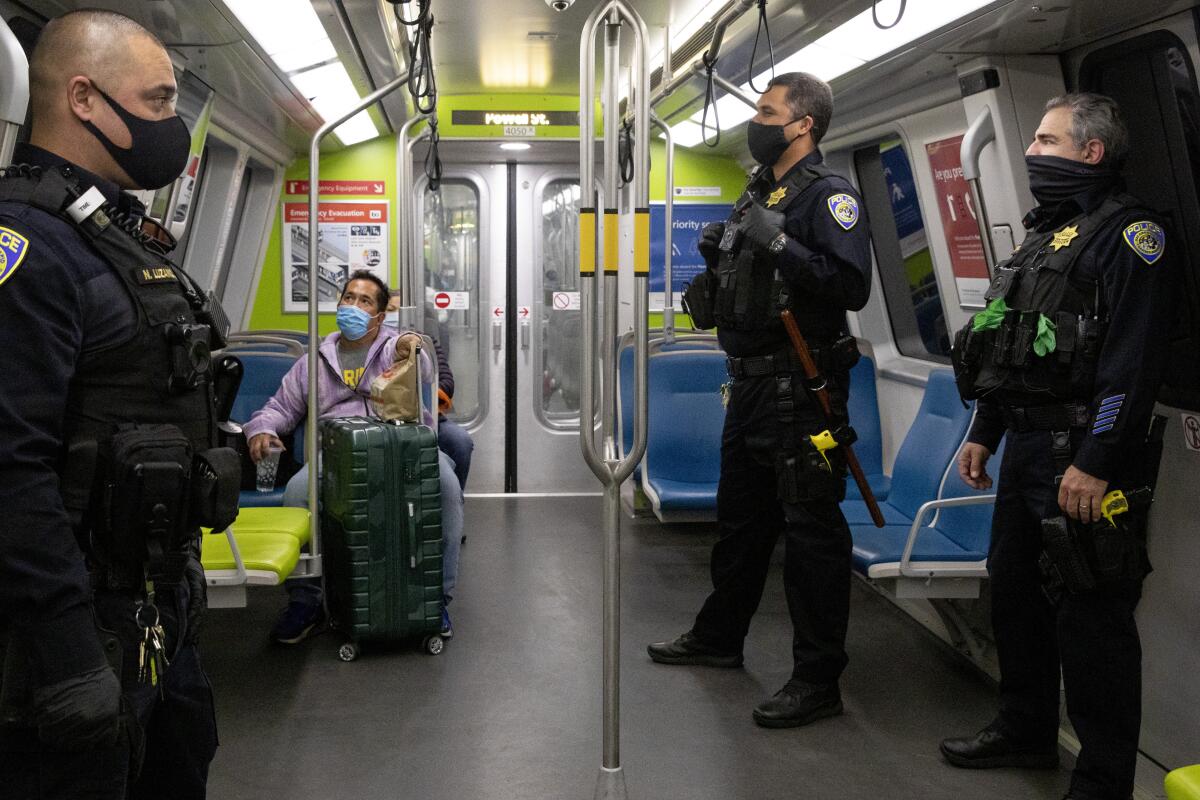
- Share via
Three weeks after becoming the first California county to reinstitute a mask mandate in most indoor public settings amid climbing coronavirus cases and hospitalizations, Alameda County has rescinded the order — citing improving conditions.
The move, effective at 12:01 a.m. Saturday, coincides as the San Francisco Bay Area’s second most populous county progresses from the high to medium COVID-19 community transmission level as defined by the U.S. Centers for Disease Control and Prevention.
That agency recommends public indoor masking for counties in the high level, but not for those in medium.
In a statement Friday, county officials didn’t directly tie the fate of the local mask order to the CDC tiers, but instead said they closely monitored local trends and have determined the mandate can now be lifted.
“Conditions have stabilized following the sustained increases in case reports and hospitalizations we saw throughout May,” said county Health Officer Dr. Nicholas Moss. “While we expect continued impacts from COVID-19 in the coming weeks, and masks remain strongly recommended, it is appropriate to step down from the health officer masking order at this time.”
Alameda County has reinstated an indoor masking rule, the first time a California county has issued a mask mandate since the winter Omicron surge faded.
Over the seven-day period ending Thursday, Alameda County reported an average of 858 new coronavirus cases per day — down 9% from two weeks ago, according to data compiled by The Times. As of Thursday, 141 coronavirus-positive patients were hospitalized countywide, including 15 in intensive care.
Alameda’s renewed mask mandate, which went into effect June 3, marked the first time a California county had reissued such an order since the initial winter Omicron surge faded.
Though transmission has remained elevated since then, Alameda County ultimately proved to be an exception, rather than a harbinger. No other sizable county followed its lead.
San Francisco and most of the Bay Area have thus far held off on reinstating a mask mandate, saying they don’t see the need for it.
Even with the order soon to be lifted, Alameda County, like California as a whole, continues to strongly recommend public indoor masking.
“Masks work and are still an important tool to slow the spread of COVID-19 in our communities, especially when rates are high,” Moss said. “We strongly encourage everyone to continue masking to protect themselves and others from COVID.”
Health officials in Los Angeles County have said they would reimpose a public indoor mask mandate should the region fall in the high COVID-19 community level for two consecutive weeks. That category, the worst on the CDC’s three-tier scale, indicates not only significant community transmission but also that hospital systems may grow strained by coronavirus-positive patients.
Despite the latest surge in coronavirus cases, the impact on hospitals has been relatively minor and COVID-19 deaths have remained fairly low and stable.
Based on current hospitalization trends, L.A. County would likely not reach that category until mid-July.
However, that projection is “based on that assumption of a continued rate of increase that doesn’t change, and that’s really impossible to predict,” said Dr. Paul Simon, chief science officer for the L.A. County Department of Public Health.
“We’re cautiously optimistic that we may level off and, in the best of all worlds, we will begin to see a decline in hospital admissions sooner rather than later,” he told reporters Thursday. “But it is hard to predict.”
More to Read
Sign up for Essential California
The most important California stories and recommendations in your inbox every morning.
You may occasionally receive promotional content from the Los Angeles Times.
